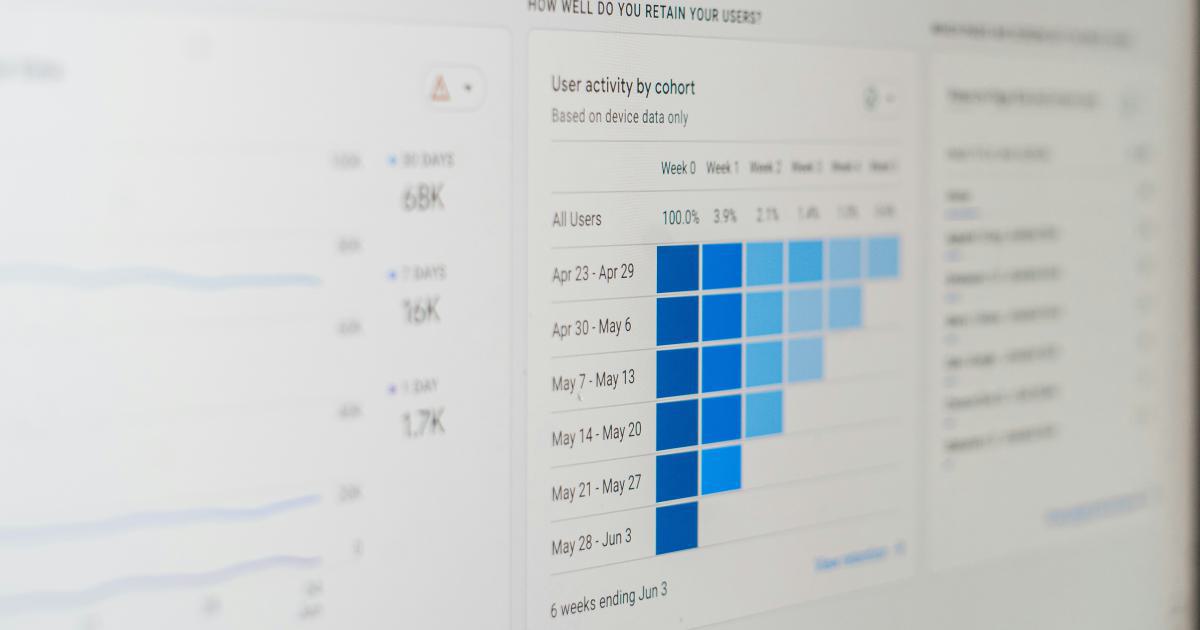Best Practices for A/B Testing Checkout Experiences


Introduction: The Importance of Optimizing Checkout Experiences
In the highly competitive world of e-commerce, providing a seamless and optimized checkout experience has become a crucial factor in driving sales and customer satisfaction. A/B testing, a powerful tool in the digital marketer's arsenal, allows businesses to experiment with different variations of their checkout flow and identify the most effective approaches. By continuously refining and improving the checkout process, businesses can enhance conversion rates, increase average order values, and build stronger customer loyalty.

This comprehensive article will delve into the best practices for A/B testing checkout experiences, guiding you through the essential steps to unlock the full potential of your e-commerce platform. From understanding the key metrics to consider, to designing and executing effective A/B tests, and finally, interpreting the results to make data-driven decisions, this article will equip you with the knowledge and strategies to optimize your checkout experience and drive sustainable business growth.
Defining the Checkout Experience
The checkout experience encompasses the entire process a customer undergoes from the moment they decide to make a purchase to the final completion of the transaction. This journey includes various touchpoints, such as:
- Cart page: Where customers review their selected items and proceed to checkout.
- Shipping and billing information: Where customers input their personal and payment details.
- Order review: Where customers can review and confirm their order before finalizing the purchase.
- Payment gateway: The final step where customers securely complete the transaction.
Optimizing each of these touchpoints is crucial, as any friction or roadblocks can lead to abandoned carts and lost sales. By leveraging A/B testing, businesses can identify the most effective configuration of these elements, ensuring a seamless and conversion-driven checkout experience.
Understanding Key Metrics for Checkout Optimization
When it comes to A/B testing checkout experiences, there are several key metrics to consider:
Conversion rate: The percentage of visitors who successfully complete a purchase. This is the primary indicator of the effectiveness of your checkout process.
Cart abandonment rate: The percentage of customers who add items to their cart but do not complete the purchase. Lowering this rate is a crucial goal of checkout optimization.
Average order value (AOV): The average monetary value of each completed transaction. Enhancing the checkout experience can contribute to increased AOV.
Revenue per visitor: The average revenue generated per website visitor. This metric combines conversion rate and AOV to provide a holistic view of the checkout's performance.
Customer satisfaction: Metrics such as Net Promoter Score (NPS) and customer reviews can indicate the overall satisfaction with the checkout experience.
Checkout funnel metrics: Tracking the drop-off rates at each stage of the checkout process can help identify specific points of friction.
By establishing a clear understanding of these key metrics, businesses can set measurable goals and effectively evaluate the impact of their A/B testing efforts.

Designing Effective A/B Tests for Checkout Optimization
Crafting well-designed A/B tests is the foundation for uncovering valuable insights and driving meaningful improvements to the checkout experience. Here are the essential steps to follow:
1. Identify Areas for Optimization
Begin by closely examining your current checkout process and identifying potential pain points or areas for improvement. This can be achieved through:
- User feedback: Gather insights from customer reviews, surveys, and support inquiries to pinpoint areas of friction or dissatisfaction.
- Checkout funnel analysis: Examine the drop-off rates at each stage of the checkout process to uncover bottlenecks.
- Competitor analysis: Benchmark your checkout experience against industry leaders to identify opportunities for differentiation.
2. Formulate Hypotheses
Based on the insights gathered in the previous step, develop testable hypotheses that address the identified areas for optimization. These hypotheses should be specific, measurable, and actionable. For example:
- "Reducing the number of form fields on the billing page will increase the checkout conversion rate by 5%."
- "Introducing a progress indicator on the checkout page will decrease the cart abandonment rate by 3%."
3. Design Test Variations
Carefully plan the variations you will test, ensuring that each one is distinctly different and addresses a specific hypothesis. Some common areas to experiment with include:
- Layout and design: Explore different configurations of the checkout page, such as the placement of form fields, buttons, and visual elements.
- Copy and messaging: Test different wording, tone, and call-to-action (CTA) copy to enhance clarity and persuasiveness.
- Checkout flow: Experiment with the sequence of steps, the inclusion of optional features (e.g., guest checkout, social login), and the overall user experience.
- Payment options: Evaluate the impact of offering various payment methods, payment plans, or highlighting specific payment options.
4. Establish a Testing Methodology
Determine the appropriate testing methodology to ensure the validity and reliability of your results. Key considerations include:
- Sample size and statistical significance: Ensure your test has sufficient traffic and sample size to achieve statistically significant results.
- Testing duration: Allow enough time for the test to run and collect reliable data, typically 2-4 weeks, depending on your traffic levels.
- Traffic allocation: Decide on the percentage of traffic to allocate to each variation, typically 50/50 or 90/10 for an A/B test.
- Randomization and control: Implement proper randomization and a control group to isolate the impact of the tested variations.

5. Implement the A/B Test
With the test design in place, work closely with your development team to implement the necessary changes and ensure a smooth rollout of the A/B test. This includes:
- Code implementation: Ensure the test variations are accurately reflected in the live checkout experience.
- Quality assurance: Thoroughly test the implementation to identify and address any potential issues or bugs.
- Monitoring and data collection: Set up the necessary tracking and analytics to capture the performance data for each variation.
Analyzing and Interpreting A/B Test Results
Once the A/B test is running, the critical phase of analyzing and interpreting the results begins. This step will enable you to make data-driven decisions and optimize the checkout experience accordingly.
1. Collect and Analyze the Data
Gather the performance data for each variation, including the key metrics identified earlier (conversion rate, cart abandonment rate, AOV, revenue per visitor, and customer satisfaction).

Analyze the data to identify statistically significant differences between the variations. Pay close attention to the following:
- Conversion rate: Determine which variation led to a higher percentage of successful purchases.
- Cart abandonment rate: Identify the variation that reduced the number of abandoned carts.
- Average order value (AOV): Assess which variation resulted in higher average order values.
- Revenue per visitor: Evaluate the overall impact on revenue generation per website visitor.
- Customer satisfaction: Review any changes in customer feedback or satisfaction metrics.
2. Interpret the Results
Once you have the analysis, interpret the findings to understand the impact of the tested variations. Consider the following:
- Statistical significance: Ensure the observed differences are statistically significant and not due to chance.
- Practical significance: Assess the magnitude of the impact and its potential to drive meaningful business outcomes.
- Underlying reasons: Examine the possible reasons behind the performance differences, such as changes in user behavior, perceptions, or preferences.
- Potential trade-offs: Evaluate any potential trade-offs between the metrics, as optimizing one aspect may impact another.
3. Make Data-Driven Decisions
Based on the interpretation of the results, make informed decisions about implementing the winning variation or iterating on the tested ideas. This step is crucial, as it directly translates the insights into tangible improvements to the checkout experience.
Consider the following when making decisions:
- Implement the winner: If one variation significantly outperforms the others, implement the winning design as the new standard.
- Iterate and retest: If the results are inconclusive or the differences are marginal, consider refining the variations and retesting to identify the optimal solution.
- Prioritize and test further: If multiple variations show promising results, prioritize the most impactful changes and test them against each other in subsequent rounds.
- Communicate and collaborate: Ensure that the insights and decisions are shared with the broader team, fostering a data-driven culture and continuous improvement mindset.

Scaling and Sustaining Checkout Optimization
Achieving an optimized checkout experience is an ongoing process that requires a sustained effort. To scale and maintain the improvements, consider the following best practices:
1. Establish a Continuous Testing Cadence
Implement a regular schedule of A/B testing to continuously refine and enhance the checkout experience. This may involve testing new ideas, iterating on past winners, or exploring different aspects of the checkout flow.
2. Monitor and Adapt to Changing Trends
Regularly monitor industry trends, customer behavior, and technological advancements that may impact the checkout experience. Be prepared to adapt your testing strategy and implement changes to stay ahead of the curve.
3. Integrate Checkout Optimization into Your Digital Strategy
Ensure that checkout optimization is a key component of your overall digital strategy, collaborating with cross-functional teams (e.g., marketing, product, UX) to align goals and leverage synergies.
4. Foster a Data-Driven Mindset
Promote a culture of continuous improvement and data-driven decision-making throughout your organization. Empower your team to actively participate in the A/B testing process and share insights to drive lasting change.
5. Leverage Advanced Techniques
Explore more advanced A/B testing techniques, such as multivariate testing, personalization, and machine learning-driven optimization, to unlock even greater improvements to the checkout experience.
By embracing these best practices, you can effectively scale and sustain your checkout optimization efforts, driving consistent improvements in conversion rates, customer satisfaction, and overall business performance.
Conclusion: Unlocking the Full Potential of Your Checkout Experience
In the highly competitive world of e-commerce, optimizing the checkout experience through A/B testing has become a critical strategy for driving business growth and customer loyalty. By implementing the best practices outlined in this article, you can unlock the full potential of your checkout process, enhance conversion rates, increase average order values, and ultimately, create a seamless and delightful purchasing experience for your customers.
Remember, the journey of checkout optimization is an ongoing one, requiring a data-driven mindset, a commitment to continuous testing and improvement, and a collaborative approach across your organization. Embrace this challenge, and you'll be well on your way to driving sustainable success in the dynamic world of online commerce.